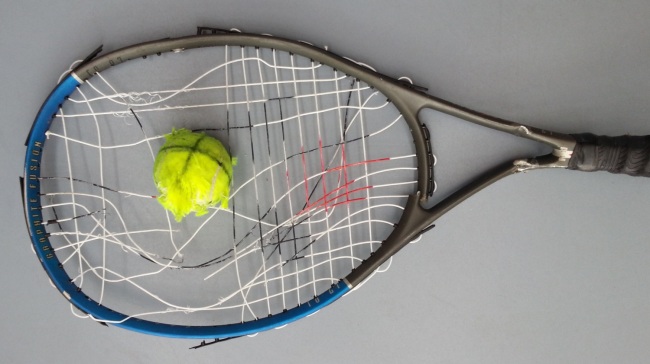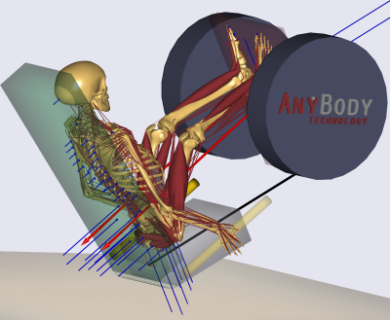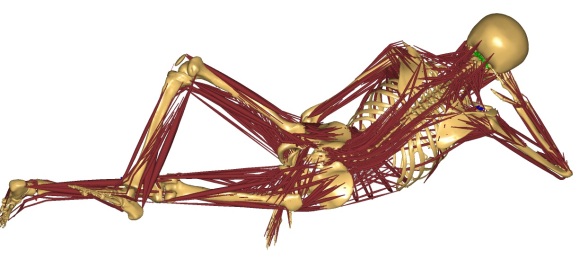Biomechanics like every scientific field has its main conferences. The International Society of Biomechanics hosts a biannual congress that attracts around 1000 researchers from literally all over the world, and these conferences are among my absolute favorite events.
This July the event was in Natal, Brazil. It had to be Brazil, of course, with its emerging economy, enormous natural resources, great advances in technology and science and wonderful weather. The country has become a megatrend lately. Biomechanics has its megatrends too, and no place is better to catch up with them than the ISB conferences. I will mention three of them here:
Me doing my stuff at the satellite symposium on computer simulation.
Muscle synergies – neuroscience meets biomechanics
It is no secret that the central nervous system is very advanced. Christof Koch of the Allen Institute for Brain Science has nominated the brain “the most complex object in the known universe”. Of course it is debatable how and whether we can delimit objects in the universe, and one could argue (and prove in psychological tests) that several brains together work better than one. But despite the central nervous system’s amazing abilities, when you understand a little about the complexity of the control problem that must be solved in real time just to make a human walk and stay in calculated balance (or calculated imbalance, actually) it is still rather impressive how our sensory-motor system manages, and much research is devoted to this problem.
From the neuroscience perspective, scientists are measuring signals that travel up and down the neural pathways and making detailed models of them. It was nice to see a few of those presented at the conference. From the biomechanics side we try to understand how muscle forces come together to provide exactly the amount of force at exactly the right time to keep us on our feet, considering the three-dimensional dynamics we are subject to, including friction, gravity, contact forces, perturbations, acceleration, centrifugal, gyroscopic and Coriolis forces. Setting up the equations is mind boggling to most of us, let alone solving them in real time. Neuroscientists and biomechanists are addressing the same problem from two separate sides, and they may be just about to meet in the middle.
All that analysis of neural signals has brought about a new idea that is spreading like a wildfire at the moment: muscle synergies. From a special statistical processing of the signals to different muscles it is possible to realize that they are not independent. It looks like the vast majority of the signals, and we are talking several dozens, can be described by just a few free variables. If the central nervous system can make all this happen through modulation of just a small number of variables, then perhaps it is not so strange that it can manage the complexity.
Muscle synergies were the topic of several very interesting presentations and indeed also one of the focuses of my work at the moment, so stay tuned for more info in future blog entries.
Forward, inverse, static, dynamic
Other approaches that seem to come together are the different solution methods for musculoskeletal systems. The issue is that Newton’s equations allow us to find the movement if the know the forces or find the forces if the know the movement. These two different approaches have been called forward and inverse dynamics respectively, and the latter is sometimes called static optimization, which in my opinion is misleading. I’ll try not to go off on a tangent about that but merely mention than scientists tend to like their own approaches, often just because it is a hassle to try out different approaches, so a lot of arguments have been wasted on debating whether one or the other is the best way to go. For a long time, forward dynamics seemed to be chosen by a lot of scientists, but inverse dynamics started its comeback when two of the leading scientists in the field, Anderson and Pandy, published a paper entitled “Static and dynamic optimization solutions for gait are practically equivalent” [1]. Seemingly, two paths can lead to the same goal.
What happened at this conference is that the number of successful results and new approaches based on inverse dynamics seemed to be increased compared to earlier conferences, and several predictive papers were presented. The society’s president, Ton van den Bogert, presented direct collocation methods capable of predicting motion as well as forces, i.e. both sides of Newton’s equations, and my colleague, Michael Skipper Andersen showed how we can predict ground reaction forces in inverse dynamics simulations of gait and how the predicted forces actually lead to much better estimations of hip joint reaction forces. I think these developments are going to bring much more clinical applications of musculoskeletal simulation in the near future.
Clinical applications
Speaking of clinical applications, the coolest presentation from my point-of-view was by René Fluit from the University of Twente. René presented preliminary results from the TLEM/Safe project, in which an exceptionally detailed but generic lower extremity model is made specific to each patient in a surgical planning system, building on state-of-the-art technologies like AnyBody and Mimics. The picture below shows René (barely visible in the lower part of the photo) presenting the generic model (left) and the model morphed to represent a patient with severe pelvis and hip deformation (right). I am really excited about the prospects of this technology for treatment of very disabling diseases.
Another really amazing practical application of musculoskeletal simulation was by Henrik Koblauch (picture below) from the University of Copenhagen. Henrik develops amazing models of airport cargo loaders’ work situations. These are the guys who load and unload (and accosionally break) your heavy suitcase. They work in impossible postures and under very tight space constraints. Henrik was able to identify certain working postures that are especially injury-prone.
References
1. Anderson, F. C. and M. G. Pandy. Static and dynamic optimization solutions for gait are practically equivalent. J. Biomech. 34:153-161, 2001.








